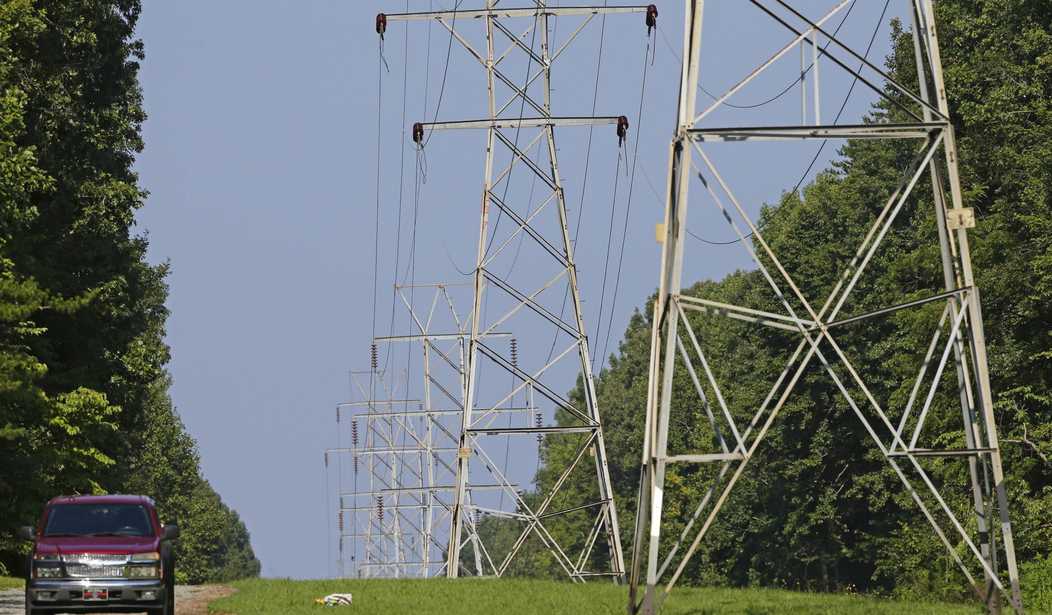WASHINGTON — Proper planning for a potentially catastrophic EMP attack has been hampered by knowledge gaps about the nature of such an incident and a lack of authority for the Department of Homeland Security to call the shots in disparate critical infrastructure sectors, according to a new report.
The Strategy for Protecting and Preparing the Homeland against Threats from Electromagnetic Pulse (EMP) and Geomagnetic Disturbance (GMD) released today by DHS covers intentional electromagnetic pulse attacks, including high-altitude nuclear detonations, along with naturally occurring geomagnetic disturbances, or solar coronal mass ejections; both could wreak havoc on critical infrastructure such as the power grid, water systems, transportation and communications. “The impacts are likely to cascade, initially compromising one or more critical infrastructure sectors, spilling over into additional sectors, and expanding beyond the initial geographic regions,” notes the report.
“Essentially, any electronics system that is not protected against extreme EMP or GMD events may be subject to either the direct ‘shock’ of the blast itself or to the damage that is inflicted on the systems and controls upon which they are dependent,” DHS adds.
The strategy doesn’t include a plan for implementation, which DHS said would be forthcoming to guide management, oversight and appropriations. Development of the implementation plan will also include input from other federal agencies and the private sector.
EMP and GMD incidents are characterized by DHS as “low probability/high consequence scenarios that challenge effective policymaking,” and “significant uncertainties exist regarding the likely effects of extreme EMP and GMD events on existing civilian critical infrastructure.” DHS is looking for hints from past events such as the 1989 solar storm that knocked out power to six million customers in much of Quebec for several hours or the Carrington Event of 1859, which electrified telegraph lines and resulted in major outages.
A severe GMD event “could create a complex set of cascading effects, including requiring rerouting of air traffic to avoid areas where communication and navigation would be limited by space weather impacts.”
“Many of the most harmful effects caused by electromagnetic incidents occur within milliseconds or seconds. These effects may simultaneously damage critical energy distribution nodes and industrial control systems over wide geographic areas through damage to microprocessors and power transformers. Such simultaneous disruptions over large areas of the country would likely undermine the implementation of mutual aid plans and agreements, a cornerstone of our approach to disaster response,” says the DHS strategy. “Response and recovery may be further complicated by the relative lack of awareness of electromagnetic threats and hazards in government and industry, the potential unavailability of communication systems, and the dearth of operational experience in dealing with the aftermath of electromagnetic incidents.”
Priorities in the strategy, in the event of an attack or space storm, are minimizing the loss of life and restoring critical infrastructure.
The department will focus on three risk-mitigation goals: Improving risk awareness of electromagnetic threats, enhancing capabilities to protect critical infrastructure should an incident occur, and promoting effective electromagnetic-incident response and recovery.
“Current EMP-related intelligence gathering, sharing, and analysis remains largely stove-piped within the federal government and across DHS, which leads to disparate understanding of potential electromagnetic threats and hazards,” the report says. “This problem also creates uncertainties about how DHS should address critical infrastructure vulnerabilities. In addition, government entities are often challenged in their ability to understand vulnerabilities and consequences to private and public sector critical infrastructure from EMP threats. These knowledge gaps make risk-informed decision-making difficult.”
“…Limited scientific research exists regarding the vulnerabilities of the electric grid and other critical infrastructure from the impacts of electromagnetic threats and hazards. Governmental, academic, and private sector entities need a more unified research effort to better inform risk assessments that support preparedness measures for the civilian sector.”
Even with more research, DHS noted that “translating scientific discovery into updated and more effective protective measures against electromagnetic threats is difficult due to the distributed ownership of the nation’s critical infrastructure and its diverse regulatory regime.”
“National means of detecting imminent GMD-hazard events and notifying critical infrastructure owners and operators exist, but analogous capabilities to address EMP threats require further development,” the strategy continued. “In addition, potential disruption to the continuity of government (COG) by an electromagnetic event has not been fully assessed and remedied. This includes assessing what redundant capabilities may be needed to ensure the impact of electromagnetic incident is limited and infrastructure remains resilient.”
The fact that potential damage caused by EMP could be spread across a multitude of sectors also presents challenges as “commercial interests and the specter of regulatory enforcement create disincentives for owners and operators to openly share information about potential disruptions to their systems caused by electromagnetic events.”
“DHS critical infrastructure protection efforts are largely centered on voluntary partnerships and heavily depend on information sharing,” the report notes. “The department actively supports vulnerability mitigation but does not generally have authority to compel it.”









Join the conversation as a VIP Member